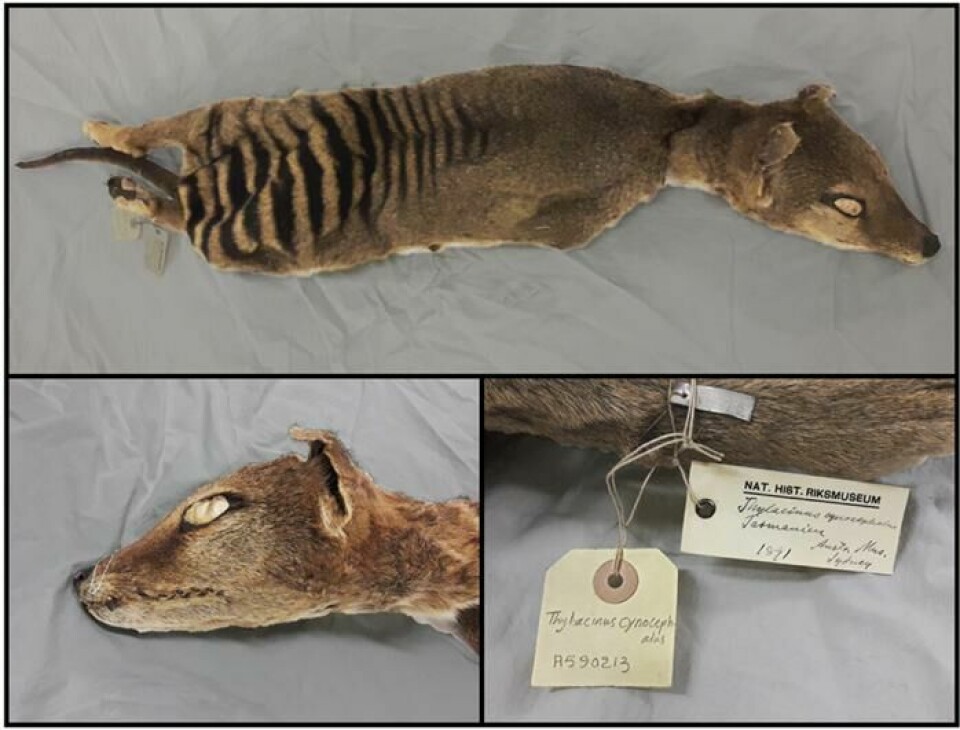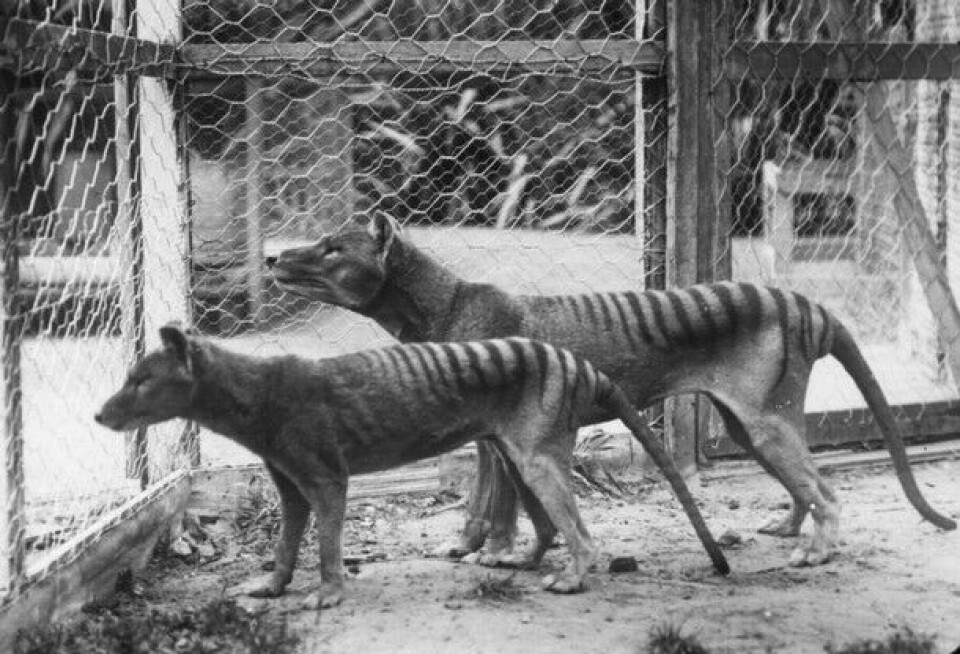
Researchers have managed to extract RNA from an extinct animal
The last known Tasmanian tiger died in 1936. “It’s unexpected and fantastic to get this information from an extinct animal,” a researcher at UiT The Arctic University of Norway says.
In the last two decades, scientists have made steady progress in extracting DNA from animals, plants, and humans that lived in the past.
This has made it possible to map the genome of animals like mammoths.
Examining DNA can unveil the blueprint of an organism, while RNA can offer further insights into how that blueprint was implemented.
“Researchers have thought that RNA is much less stable than DNA and that it’s difficult to extract RNA. Very few have tried to find it in old samples,” Bastian Fromm, a researcher at UiT The Arctic University of Norway, tells sciencenorway.no.
He and Swedish colleagues have now for the first time extracted RNA from an extinct animal.
They have used an old hide from a Tasmanian tiger, stored at the Swedish Museum of Natural History. The research reveals which genes were active in the animal's skin and muscles.
“We now know that if conditions are good for preserving DNA, then they are also good for preserving RNA,” Fromm says.

An extinct predator
Researchers behind the new study have taken three samples from a 130-year-old hide from a Tasmanian tiger. The RNA analysis was done at the Centre for Palaeogenetics in Stockholm, Sweden.
The Tasmanian tiger, or thylacine, was a dog-like predator. It was first extinct from Australia and New Guinea about 3,000 years ago but survived on the island of Tasmania.
European immigrants hunted the Tasmanian tiger to extinction in the 19th and early 20th centuries. The last known individual died in a zoo in 1936.
By studying RNA in, for example, an extinct animal, researchers can gain a better understanding of the functions of different segments of the DNA.
With RNA, you can look at what kinds of genes were active in different types of tissues. You can also find RNA used to regulate which genes should be active and not.

Known and new genes
Researchers behind the new study extracted millions of RNA sequences from the old hide.
Most viewed
They found RNA from active genes in skin and muscles: 270 genes in the skin and 236 in muscles, according to Nature.
The researchers also found RNA used to control which genes should be on and off. Some of these had not been mapped before.
“We found new genes in the Tasmanian tiger’s genome for microRNA. They are very important gene regulators,” Fromm says. “From an academic perspective, it’s unexpected and fantastic to get this information from an extinct animal.”
The Tasmanian tiger is one of the animals that people are working to revive, based on old DNA. Fromm says that the new research is also a step toward this goal.
Among others, VG (link in Norwegian) has written about a project aimed at reviving the Tasmanian tiger. Not all researchers are positive.
Mármol Sánchez, who has been part of the new study, tells NewScientist that de-extinction was not a focus of the research. However, he believes that people who want to do so would benefit from also looking at RNA to get the full picture.
Hopes more people will look for RNA
The new study shows that it is possible to extract old RNA, for example from museum remains.
It’s not the first time researchers have found RNA in animals that died a long time ago.

Fromm was previously involved in a study of RNA in 14,300-year-old remains of a dog found in permafrost. However, there are still few researchers who have tried to find RNA in such samples.
“I hope there will be a change in the field now and that more researchers use RNA in addition to DNA to explore old samples from extinct animals,” Fromm says.
He believes there is great potential in the field.
“Each cell may have one or two copies of the genome, but there are many thousands of copies of RNA in each cell. This means that there is much more RNA in an organism than DNA,” he says.
What genes do
Being able to study RNA in old remains opens up a new source of information, Oliver Smith tells Nature. He is a geneticist at the company Micropathology in the UK.
“Unlike looking at what a genome is, we can look at what the genome does,” Smith says.
RNA can tell us about the function of genes in an extinct animal, Andrew Pask tells New Scientist. He is a researcher at the University of Melbourne, Australia, and is part of a team working to de-exctinct the Tasmanian tiger.
“We had previously thought only DNA remained in old museum and ancient samples,” Pask says.
Genetic material from viruses
Fromm and colleagues also found RNA from viruses in the Tasmanian tiger, although that was not what the study was about. Viruses can either have RNA or DNA as genetic material.
The coronavirus, for example, is an RNA virus.
“There is a great opportunity now to use the protocols we have used and improved to extract RNA from all kinds of old samples. For example, from bats,” Fromm says. “It could be very interesting for studying RNA viruses. Then you might be able to reconstruct the evolution of the virus or find out where it first came from.”
———
Translated by Alette Bjordal Gjellesvik
Read the Norwegian version of this article on forskning.no
Reference:
Marmol-Sanchez et al. Historical RNA expression profiles from the extinct Tasmanian tiger, Genome Research, 2023. DOI: 10.1101/gr.277663.123





































